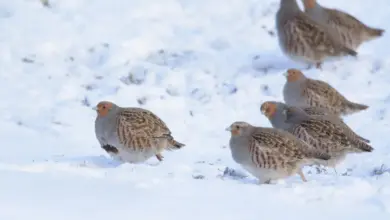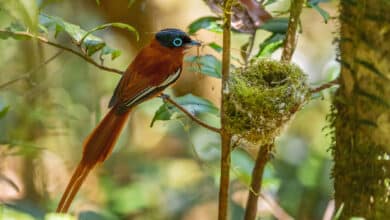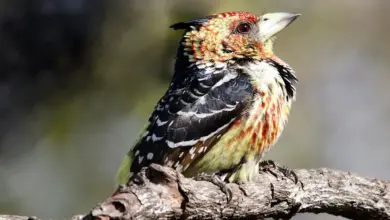Rose-faced Parrots (Gypopsitta pulchra)
One of our favourites parrots is the Rose-faced Parrot (Gypopsitta pulchra), a stunning bird native to South America’s lush forests. We explore their unique habitat in Colombia and Ecuador and delve into their endangered status, and unveil their striking physical features and gentle personalities. We’ll also examine their social behaviors, mating rituals, varied diet, and taxonomy. Join us in uncovering the intriguing aspects of these splendid birds, understanding their challenges, and appreciating their role in our planet’s rich biodiversity.
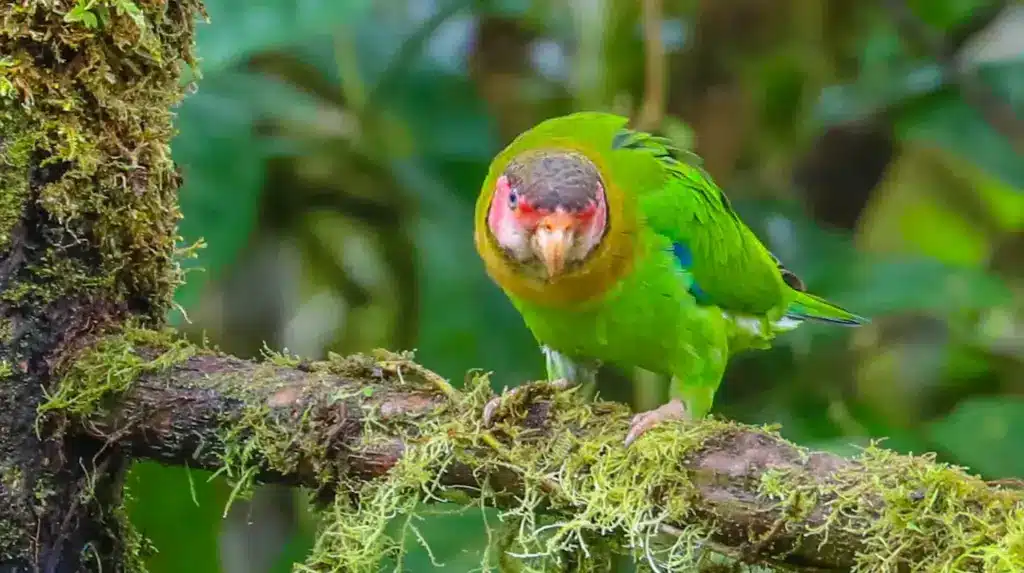
Introduction
The Rose-faced Parrot, scientifically known as Gypopsitta pulchra, is a vibrant and fascinating bird native to parts of South America. This blog post delves into the world of these beautiful birds, exploring their habitat, conservation status, physical description, personality, mating habits, diet, taxonomy, and other intriguing aspects.
Habitat and Location
Rose-faced Parrots are endemic to western Colombia and western Ecuador. They thrive in subtropical or tropical moist lowland or montane forest areas. These regions provide the perfect environment for them, offering ample food sources and suitable nesting sites.
Conservation Status
Unfortunately, these birds are classified as endangered. Their numbers have been declining due to habitat loss and fragmentation, poaching for the pet trade, and other human-induced factors. Their natural camouflage and elusive nature make them hard to spot in their dense forest habitats, but their distinct calls often give away their presence.
Physical Description
These parrots are medium-sized, averaging 9 to 9.5 inches in length and weighing around 7.1 to 7.3 ounces. Both sexes display predominantly green plumage, but they are distinguished by dark grey/brown crowns, rose/pink lores, and distinctive coloring around their eyes and ears. The chin and forecheeks are pale rose, and the hindneck is dull olive/yellow, blending into green on the breast. The wings showcase a mix of orange and yellow, while their green tail is tipped with blue and red at the base. They possess horn-colored bills, white eye rings, and pale-yellow irises. Females are similar to males but slightly smaller, and immatures lack the full facial coloring of adults, with more green in their plumage.
Personality
In captivity, Rose-faced Parrots are known for their quiet, friendly, and gentle nature. They are highly social birds, preferring the company of a mate or a group. In the wild, they are almost always found in flocks. These birds adapt well to new environments and are considered hardy.
Mating and Social Behavior
The social structure of Rose-faced Parrots in the wild revolves around their flocks. During mating, they exhibit a range of behaviors and vocalizations to attract mates. The specifics of their mating rituals, however, require more research for a comprehensive understanding.
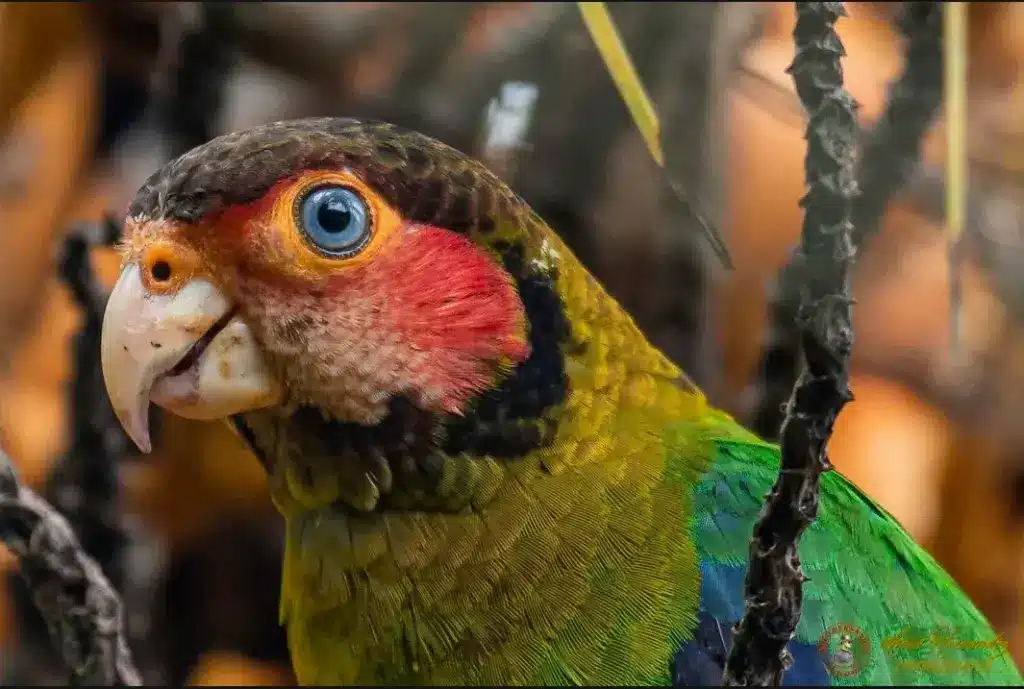
Diet
In the wild, their diet mainly consists of eucalypt flowers, fruits, nectar, and pollen. In captivity, they are fed a variety of grains, seeds, nuts, fresh fruits, and vegetables, mirroring their natural diet as closely as possible to ensure their health and well-being.
Taxonomy
The taxonomical classification of the Rose-faced Parrot is as follows:
- Genus: Gypopsitta
- Species: Gypopsitta pulchra
This classification places them within a group of parrots known for their striking appearances and behaviors.
Interesting Facts
- Camouflage Skills: Their green plumage blends seamlessly with the forest canopy, making them difficult to spot.
- Vocalizations: They are known for their harsh and shrieking calls, especially during flight, which is a contrast to their quieter nature in captivity.
- Adaptability: These parrots have shown a remarkable ability to adapt to new environments, especially in captivity.
- Endangered Status: Their endangered status highlights the need for conservation efforts to protect their natural habitats and prevent illegal trade.
Conclusion
The Rose-faced Parrot is a remarkable and beautiful bird, with unique characteristics and behaviors that make it a subject of interest for bird enthusiasts and conservationists alike. Their endangered status underscores the importance of ongoing efforts to protect these birds and their natural habitats. By understanding more about their lives and needs, we can work towards ensuring their survival and continued presence in the world’s biodiversity.
This post provides a comprehensive overview of the Rose-faced Parrot, offering insights into its habitat, threats, physical characteristics, behavior, diet, and taxonomy. By raising awareness about these enchanting birds, we hope to contribute to their conservation and the preservation of their natural habitats.

